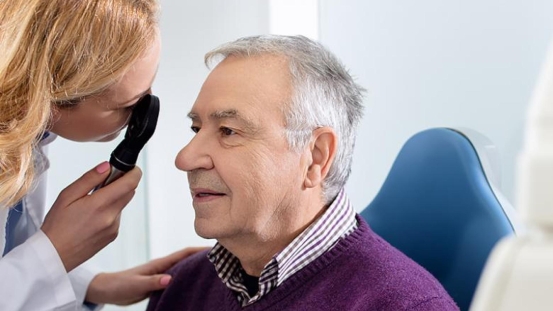

Wet age-related macular degeneration (wet AMD) is a major eye condition that can severely affect vision. It targets the macula, the part of the eye responsible for fine detail and central sight. This article reviews the main treatment approaches, their possible side effects, and preventive strategies. It also highlights lifestyle habits that support long-term eye health. Readers will gain insights into both medical therapies and daily practices that can help manage the condition effectively.
Wet age-related macular degeneration (wet AMD) is a major eye condition that can severely affect vision. It targets the macula, the part of the eye responsible for fine detail and central sight. This article reviews the main treatment approaches, their possible side effects, and preventive strategies. It also highlights lifestyle habits that support long-term eye health. Readers will gain insights into both medical therapies and daily practices that can help manage the condition effectively.

Wet AMD occurs when abnormal blood vessels grow beneath the retina and leak fluid, leading to swelling and distortion of vision. This form progresses much faster than dry AMD, which is more common and develops gradually. Because of its rapid impact on vision, early identification and treatment are essential.
Around 10% of people with AMD develop the wet type. It is most frequently diagnosed in adults over 60, though younger individuals with family history may also be affected. Symptoms often include blurred or warped vision and dark spots appearing in the central field. Recognizing these signs early can prompt timely medical consultation.
The leading therapy for wet AMD involves anti-vascular endothelial growth factor (anti-VEGF) drugs. Medications such as ranibizumab (Lucentis) and aflibercept (Eylea) block the growth of abnormal blood vessels under the retina.
These injections are delivered directly into the eye on a scheduled basis, usually monthly at first and later every few months. Clinical evidence shows that anti-VEGF treatment can stabilize or even improve vision for many patients. Still, they require consistent follow-up and may cause side effects like infection or elevated eye pressure.
In certain cases, laser treatment can be an alternative or complementary option. This method uses a concentrated light beam to seal and eliminate leaking vessels in the retina. While effective for some patients, it is generally limited to specific situations where injections may not be suitable.
Photodynamic therapy (PDT) offers another approach. It combines a light-activated drug with laser exposure to target unwanted vessels. Research indicates it can improve vision in selected patients, although its effectiveness depends on individual conditions and disease stage.
Medical treatments can be enhanced by adopting healthy lifestyle practices. A diet rich in antioxidants—such as leafy vegetables, colorful fruits, and fish high in omega-3 fatty acids—supports eye health. Maintaining a healthy weight, controlling blood pressure, and avoiding smoking are also critical.
Routine eye checkups allow for early detection and timely treatment adjustments. Wearing sunglasses to shield eyes from UV rays and staying physically active further contribute to slowing the disease’s progress.
Although effective, wet AMD treatments are not risk-free. Common issues with anti-VEGF injections include mild discomfort, temporary vision changes, and, rarely, serious complications such as retinal detachment.
Laser-based procedures may leave scarring or cause temporary vision disturbances. Monitoring for side effects and maintaining open communication with eye care providers helps patients weigh risks against the benefits of preserving sight.
Wet AMD is a challenging condition, but multiple treatment paths exist to slow its progression and protect vision. Anti-VEGF injections remain the primary therapy, with laser and photodynamic methods offering additional options for selected cases. Healthy lifestyle choices, including proper diet, regular activity, and protective habits, can enhance outcomes. Understanding the benefits and risks of treatment allows individuals to make informed decisions with their healthcare provider. For those diagnosed or at risk, professional guidance is key to building an effective and personalized management plan.